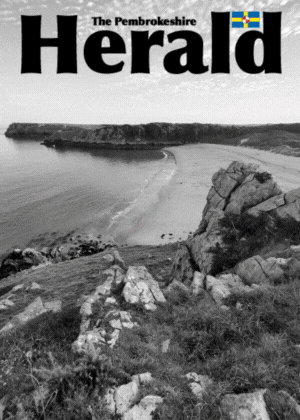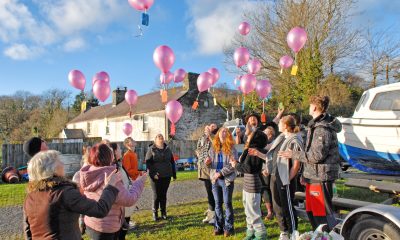News
Nothing on the telly

 LAST Saturday evening, Badger was sitting in his sett putting up his paws after a hard day making worm and grub chutney. Badger flicked across the channels looking for something to divert his poor, fatigued brain. There was nothing on Badger’s favourite channels and somewhere along the way he must have got lost in the maze of broadcasters with names like 5+24+1 (yes, Jamie, that makes 30. Have a green star for effort), because all at once he found the Eurovision song contest. Now, Badger hasn’t seen that particular televisual oddity since Ken Rowlands was last a loyal member of the Labour Party.
LAST Saturday evening, Badger was sitting in his sett putting up his paws after a hard day making worm and grub chutney. Badger flicked across the channels looking for something to divert his poor, fatigued brain. There was nothing on Badger’s favourite channels and somewhere along the way he must have got lost in the maze of broadcasters with names like 5+24+1 (yes, Jamie, that makes 30. Have a green star for effort), because all at once he found the Eurovision song contest. Now, Badger hasn’t seen that particular televisual oddity since Ken Rowlands was last a loyal member of the Labour Party.
Yes, readers: THAT long! Hasn’t Eurovision changed? Whatever happened to bell bottoms? Where were the middle-aged men and women shoe-homed into too tight costumes like so many Day-Glo polyester wrapped sausages? Where was the obligatory song that sort of went oom-pah, oom-pah, oom-pah-pah? And where was the country that always used to do quite well, the one called Whyommonnyee deece pwants? It had all become a bit flashy and sparkly. Never has so much confetti been expended, not even at a royal wedding. The light show was dazzling and some of the performances were, frankly, startling. I did not know, for example, that in Ukraine, singers’ backing tracks were powered by men running around in giant hamster wheels. As a commitment to green energy, that takes some beating. And as for Poland: well, Badger will never think of Poland in the same way again and for some reason has a yearning to visit it soon.
So many of the contestants had the good sense to sing in English, too. Tragically for the French, the lingua franca of modern popular music is the language of les Rosbifs who live over what the rest of the world still calls the ENGLISH Channel. No, readers, the French sing in a language that interacts with the modern world in the same tenuous way as How George interacts with science. Tangentially, and with every sign of pronounced confusion. One thing that impressed Badger hugely was the sheer grim-faced detennination of some of the contestants to demonstrate how pleased they were to be flying the flag. These were people not only having fun, but hell bent on showing the viewers at home just how much fun they were having. When singers were performing upbeat numbers, their teeth were blindingly white, eyes sparkly bright, and their demeanours rather like those of children who had been handed the keys to the sweetie shop. It brought to Badger’s mind, nothing more than the delighted expressions there must have been on the faces of Rob Summons and Keith Lewis when Jamie made room for them at the IPPG Cabinet trough.
Then there were the more serious numbers, sung by balladeers wearing expressions that recalled the agonised, constipated uselessness more usually associated with passing a particularly large kidney stone. The last time Badger saw that expression on a face it was on Sue Perkins’ face when well, when hmmm Ah! Okay, readers: the same sort of expression Sue Perkins always uses; the one that so successfully masks her happy-go-lucky charm and lack of self-righteousness. A bit like Reverend Lovejoy’s wife in The Simpsons. Then it came to Badger: our IPPG Councillors have much in common with Eurovision contestants.
So many of them deliver material that have as much in common with their average constituent as the average Eurovision contestant has to do with popular music in their respective homelands. The Netherlands as the home of Country music, compared to John Allen-Mirehouse (family crest a peasant possibly a pheasant, probably both – crushed under a wind turbine) representing well anyone really. There is an identikit sameness to the words uttered by IPPG Councillors in the same way as there is to the lyrical sensibilities of the average Eurovision song.
There’s a certain sameness to the insincere cant that !PPG cabinet members use to justify slashing services to the bone while making room for more trotters round their swill as there is to the constant burning, yearning and gaming of a Eurovision contestant. How many times can those charged with looking after the services delivered to the most vulnerable sit in the Council Chamber or Cabinet room lying to each other, themselves and the Pembrokeshire people that “times are hard” while they carry on defending favouring well-paid officers and divvying up the proceeds of their racket between themselves and their faithful acolytes? Holy-roller Simon Hancock struck a particularly pious note in the last Full Council meeting. Too much Methodism in his madness for Badger’s taste.
Yes, Simon it is better one sinner repenteth. Pity Keith didn’t and doesn’t. Let us all pray while Simon keeps watch over a series of disastrous cuts to adult social services provision. Perhaps Simon the Saint is just too busy with his other interests and responsibilities to notice what has happened to the adult social care budget on his watch. Up with charges; down with services; shut this; slash that; give Bryn a break; find money to let your chums round the Cabinet table; serve yourselves, not your fellow man; cut the wages of the lowest paid; preside over a pay system that penalises part time workers. Simon is to equality what Herod was to child care. Yes, readers, at the end of the day Simon’s transformation from Labour Party idealist to IPPG stooge is even more complete than the transformative experience undergone by the winner of this year’s Eurovision.
Crime
Pembrokeshire man sent to Crown Court over death by careless driving charge

A PEMBROKESHIRE man has been sent to the Crown Court to stand trial accused of causing a death by careless or inconsiderate driving.
Alexander MacCallum, aged 28, of Beach Road, Llanreath, Pembroke Dock, appeared before Llanelli Magistrates’ Court on Wednesday (Dec 18).
The court heard that MacCallum is charged with causing death by careless or inconsiderate driving following an incident on Thursday (June 13, 2024).
No plea was entered at this stage of the proceedings.
Magistrates were told the case was too serious to be dealt with at magistrates’ level and ordered that it be sent to the Crown Court for trial.
MacCallum was sent to the Crown Court on unconditional bail, with further proceedings to take place at a later date.
The prosecution was brought by Dyfed-Powys Police. No defence solicitor was formally recorded at the hearing.
Health
NHS Wales spends more than £15.5m on agency radiographers as pressures grow

NHS WALES has spent more than £15.5 million on agency radiography staff over the past five years, as mounting pressure on diagnostic imaging services raises concerns about long-term workforce sustainability.
Figures obtained by the Welsh Liberal Democrats through Freedom of Information requests show that spending on temporary radiographers almost doubled between 2020/21 and 2023/24, despite relatively low headline vacancy rates across Welsh health boards.
Radiographers carry out X-rays, CT, MRI and ultrasound scans, which are essential to emergency care, cancer diagnosis, trauma treatment and elective surgery. Delays or shortages in imaging services can have a knock-on effect across patient pathways, slowing diagnosis and treatment.
The data also highlights an ageing workforce. More than a quarter of radiographers in Wales are aged over 50, with more than one in ten aged 55 or above. In some health boards, a significantly higher proportion of staff are approaching retirement age, raising concerns that experienced radiographers could leave faster than they can be replaced.
Betsi Cadwaladr University Health Board recorded the highest agency spend, at more than £8.1m over the period covered by the FOI requests. Other health boards also reported growing reliance on temporary staff to maintain services, particularly where specialist skills are required.
While official vacancy figures remain comparatively low, professional bodies have previously warned that vacancy data does not always reflect pressure on services, as posts can be held open or covered through overtime and agency staff rather than filled permanently.
Diagnostic imaging demand has increased steadily in recent years, driven by an ageing population, advances in medical imaging technology, and rising referrals linked to cancer and long-term conditions.
Commenting on the findings, Welsh Liberal Democrat Leader Jane Dodds MS said:
“Radiographers are absolutely vital to the NHS. From diagnosing cancer to treating people in A&E, the vast majority of patient journeys depend on timely access to scans.
“These figures show a system increasingly relying on expensive agency staff while failing to plan properly for the future workforce. That is not fair on patients, and it is not fair on staff who are already under huge pressure.
“The Welsh Labour Government must take urgent action to improve recruitment and retention, support experienced staff to stay in the workforce for longer, and ensure NHS Wales has a sustainable radiography workforce fit for the future.”
The Welsh Government has previously said it is working with health boards to improve recruitment and retention across NHS Wales, including expanding training places and supporting flexible working arrangements to help retain experienced staff. Ministers have also pointed to record numbers of staff working in the NHS overall, while acknowledging ongoing challenges in hard-to-recruit specialties.
However, opposition parties and professional bodies continue to warn that without long-term workforce planning, reliance on agency staff could increase further, adding to costs and pressure on already stretched diagnostic services.
Local Government
Essential bridge maintenance and repairs planned for January
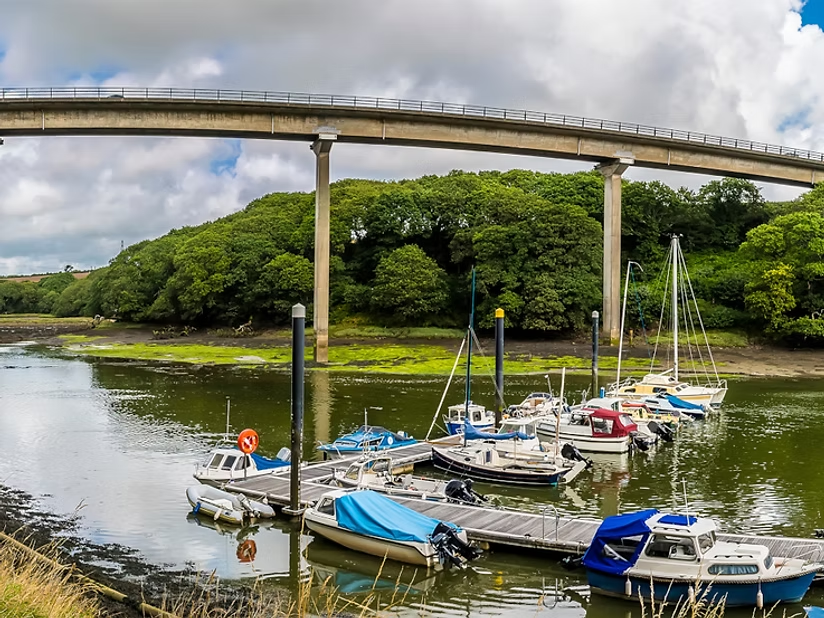
Works on Westfield Pill Bridge to affect A477 traffic
ESSENTIAL maintenance and repair work is set to begin on Westfield Pill Bridge, with traffic management in place on the A477 between Neyland and Pembroke Dock.
The programme of works is due to start on Monday (Jan 19) following a Principal Inspection carried out in 2022, which identified a number of necessary repairs to maintain the long-term durability and safety of the structure.
Westfield Pill Bridge is a key route linking communities in south Pembrokeshire and carries a high volume of daily traffic. While major works were last undertaken in 1998 — which required a full closure of the bridge — the upcoming refurbishment has been designed to avoid shutting the crossing entirely.
Instead, the works, scheduled to take place in early 2026, will be managed through traffic control measures to keep the bridge open throughout the project.
The planned refurbishment will include the replacement of both eastbound and westbound bridge parapets, the renewal of expansion joints, and full resurfacing of the bridge deck.
The work is expected to take no longer than three months and will involve weekend and night-time working to help minimise disruption. All construction activity will be carried out from the bridge deck and has been scheduled to avoid clashes with other planned trunk road works, as well as periods of higher traffic demand.
Two-way traffic signals will be in place for the duration of the works. These will be manually controlled during peak periods, with particular efforts made to reduce delays affecting school transport.
Motorists are advised that there may be delays to local bus services during the works, including the 349 (Haverfordwest–Pembroke Dock–Tenby) and 356 (Milford Haven–Monkton) routes.
Drivers are encouraged to allow extra time for journeys and to follow on-site signage while the works are underway.
-

 Crime1 day ago
Crime1 day agoMilford Haven man jailed after drunken attack on partner and police officers
-

 News4 days ago
News4 days agoDyfed-Powys Police launch major investigation after triple fatal crash
-

 Crime1 day ago
Crime1 day agoTeenager charged following rape allegation at Saundersfoot nightclub
-
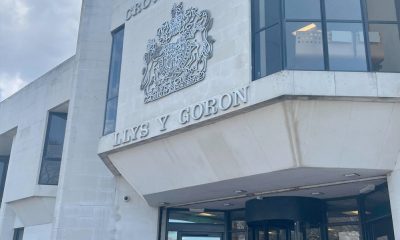
 Crime2 days ago
Crime2 days agoMan charged with months of coercive control and assaults
-

 Crime3 days ago
Crime3 days agoMan sent to Crown Court over historic indecent assault allegations
-

 Crime5 days ago
Crime5 days agoMan spared jail after baseball bat incident in Milford Haven
-
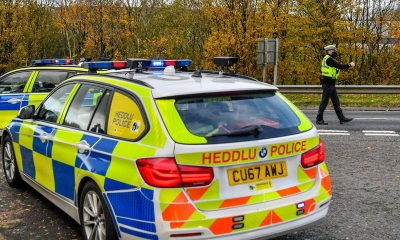
 Crime3 days ago
Crime3 days agoMilford Haven man admits multiple offences after A477 incident
-

 Crime2 days ago
Crime2 days agoWoman ‘terrified in own home’ after ex breaches court order







